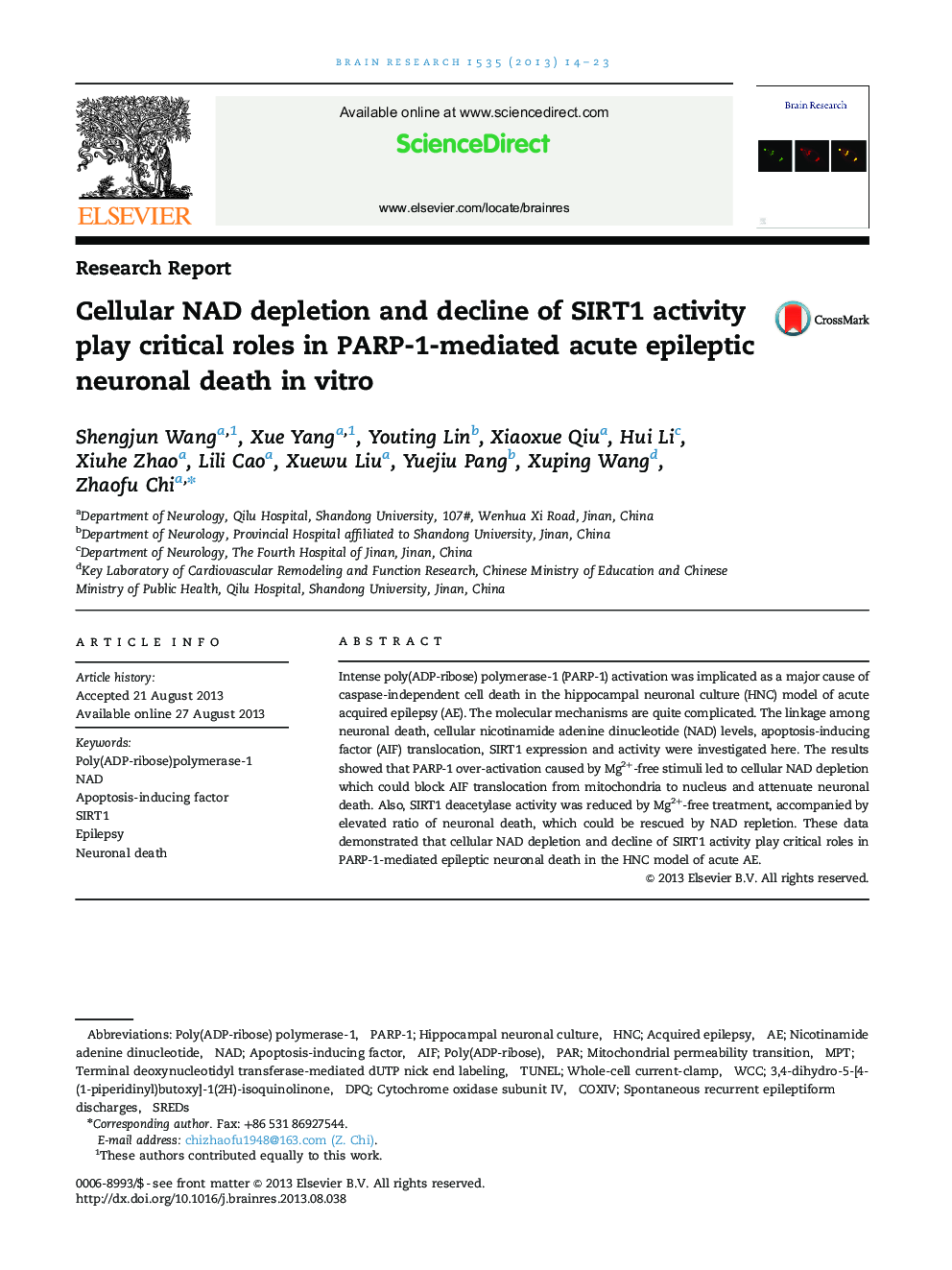| Article ID | Journal | Published Year | Pages | File Type |
|---|---|---|---|---|
| 6263622 | Brain Research | 2013 | 10 Pages |
Abstract
Intense poly(ADP-ribose) polymerase-1 (PARP-1) activation was implicated as a major cause of caspase-independent cell death in the hippocampal neuronal culture (HNC) model of acute acquired epilepsy (AE). The molecular mechanisms are quite complicated. The linkage among neuronal death, cellular nicotinamide adenine dinucleotide (NAD) levels, apoptosis-inducing factor (AIF) translocation, SIRT1 expression and activity were investigated here. The results showed that PARP-1 over-activation caused by Mg2+-free stimuli led to cellular NAD depletion which could block AIF translocation from mitochondria to nucleus and attenuate neuronal death. Also, SIRT1 deacetylase activity was reduced by Mg2+-free treatment, accompanied by elevated ratio of neuronal death, which could be rescued by NAD repletion. These data demonstrated that cellular NAD depletion and decline of SIRT1 activity play critical roles in PARP-1-mediated epileptic neuronal death in the HNC model of acute AE.
Keywords
Sirt1PARP-1Cytochrome oxidase subunit IV3,4-dihydro-5-[4-(1-piperidinyl)butoxy]-1(2H)-isoquinolinonedpqMPTCOXIVPoly(ADP-ribose)polymerase-1HNCWCCAIFmitochondrial permeability transitionEpilepsyTerminal deoxynucleotidyl transferase-mediated dUTP nick end labelingParTUNELacquired epilepsyapoptosis-inducing factorNeuronal deathNADNAD, nicotinamide adenine dinucleotidePoly(ADP-ribose)Poly(ADP-ribose) polymerase-1
Related Topics
Life Sciences
Neuroscience
Neuroscience (General)
Authors
Shengjun Wang, Xue Yang, Youting Lin, Xiaoxue Qiu, Hui Li, Xiuhe Zhao, Lili Cao, Xuewu Liu, Yuejiu Pang, Xuping Wang, Zhaofu Chi,
